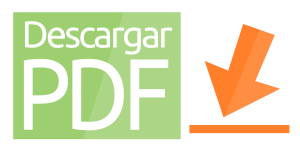Assessment. Early Education
On the other hand, we held an assembly with the students with the following questions:
- What did you like the most?
- And what less?
- Did we repeat another day?
Finally, we carry out an evaluation of the experience with the teachers. For this, we meet the two teachers and the researcher.
The purpose of this meeting was to find out how the experience had developed, what difficulties we had encountered, the decisions that had been taken, etc.
Although there was a question script, we tried to turn it into a shared conversation, breaking the question-answer rigidity.
This moment of encounter had two parts.
In the first place, we took a moment to collect on a map of the experience those ideas we suggested. We could use drawings, letters, metaphors, etc.
We leave here an image with the maps:
The second moment was, starting from what we had written on the maps and from the questions, to start a dialogue about what happened, what we decided, how we did it, what was most difficult, etc.
We leave here a fragment of a conversation where we pick up what we have learned, what it is that we carry in the backpack.
Audio transcription
We wanted to ask you: what do you think you have learned, what can you take away from the experience?
If you had to rescue those things that you take with you, that you have incorporated as something important from the experience, what would it be?
Teacher1: Well, to understand, to understand them better, when… for example, when they go out into the courtyard. Now, for example, when I went out after doing this activity, I really knew what they were playing, and I repeat ‘really’ again because they were no longer running, and that’s how it is, I already knew they were playing dinosaurs, and in fact I could talk to them and tell them ‘what, is the Martín dinosaur playing now… aha’ I mean, it has served me… so I think it has been positive.
Teacher2: To understand their game more…
Teacher1: To understand, to listen, to be able to observe well, really, no… to observe to be like that, to say, ah, look, they are running, no, ask them, what they are really doing.
Teacher2: I also agree with her. And the way to… well, what we talked about at the beginning, the way to ask them and the moment. I think it’s important. And that evidently, that it is not so also in assembly, because at the end there is a lot that they hide, others that always have the singing voice, and if you want to know really what each one thinks, or the tastes of each one, it is impossible that they tell you so… So, I believe that playing with them in class, observing, playing with them in the patio, observing, talking… listening.
Teacher1: In small groups…
Teacher2: That’s it, in more moments, and not choosing specific moments, leaving the day to give you … but of course, but now focusing on this issue, right? no… But of course, I think it’s the most interesting thing about this, that we wanted to know something, in a specific way and in a specific moment… some specific spaces, and… I think the great discovery is that… that we don’t have to be closed, that since we enter through the door we can see many things, and take them into account, even if it’s in our mind, right? and notice and then give an evaluation… more realistic at least, right? Or with more reliable data, more real ideas of the children…
